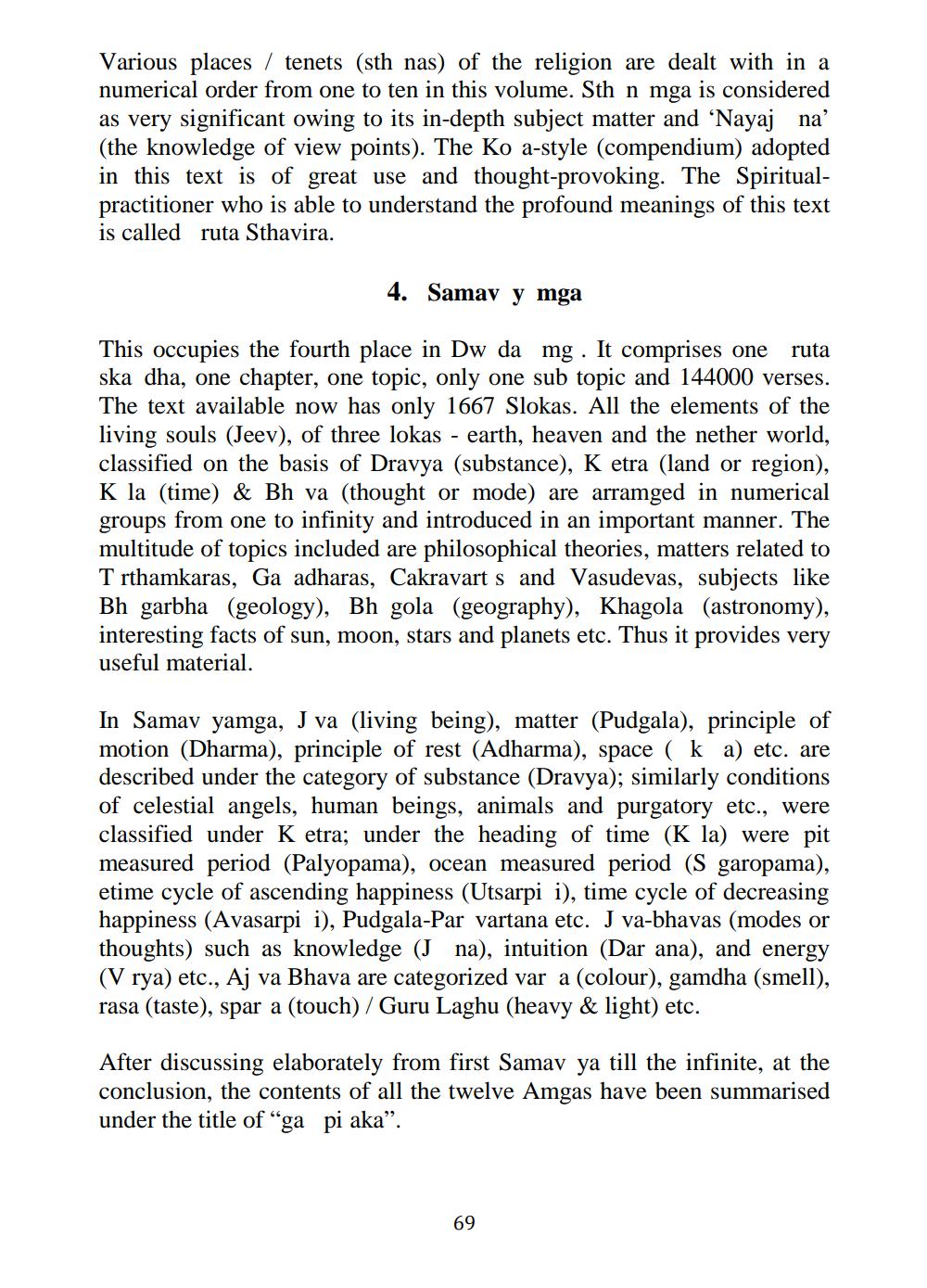________________
Various places / tenets (sth nas) of the religion are dealt with in a numerical order from one to ten in this volume. Sth n mga is considered as very significant owing to its in-depth subject matter and 'Nayaj na' (the knowledge of view points). The Ko a-style (compendium) adopted in this text is of great use and thought-provoking. The Spiritualpractitioner who is able to understand the profound meanings of this text is called ruta Sthavira.
4. Samav y mga
This occupies the fourth place in Dw da mg. It comprises one ruta ska dha, one chapter, one topic, only one sub topic and 144000 verses. The text available now has only 1667 Slokas. All the elements of the living souls (Jeev), of three lokas - earth, heaven and the nether world, classified on the basis of Dravya (substance), K etra (land or region), K la (time) & Bh va (thought or mode) are arramged in numerical groups from one to infinity and introduced in an important manner. The multitude of topics included are philosophical theories, matters related to T rthamkaras, Ga adharas, Cakravart s and Vasudevas, subjects like Bh garbha (geology), Bh gola (geography), Khagola (astronomy), interesting facts of sun, moon, stars and planets etc. Thus it provides very useful material.
In Samav yamga, J va (living being), matter (Pudgala), principle of motion (Dharma), principle of rest (Adharma), space ( k a) etc. are described under the category of substance (Dravya); similarly conditions of celestial angels, human beings, animals and purgatory etc., were classified under K etra; under the heading of time (K la) were pit measured period (Palyopama), ocean measured period (S garopama), etime cycle of ascending happiness (Utsarpi i), time cycle of decreasing happiness (Avasarpi i), Pudgala-Par vartana etc. J va-bhavas (modes or thoughts) such as knowledge (
Jna), intuition (Dar ana), and energy (V rya) etc., Aj va Bhava are categorized var a (colour), gamdha (smell), rasa (taste), spar a (touch) / Guru Laghu (heavy & light) etc.
After discussing elaborately from first Samav ya till the infinite, at the conclusion, the contents of all the twelve Amgas have been summarised under the title of “ga pi aka”.
69




